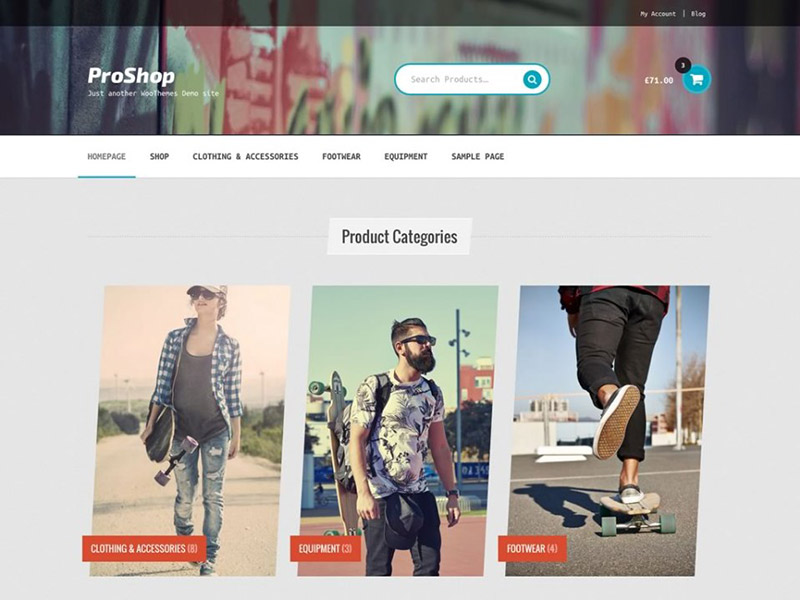
Shopify vs. Woocommerce: Comparing Two Major eCommerce Platforms Across 10 Categories
You’ve built a successful eCommerce store. That’s why you’re here at eCommerceFuel.
You’ve come to a point where your original eCommerce platform is no longer serving you as well as it did in the beginning. You’re searching for answers.
What better options exist? Maybe you want or need to affirm that you’ve made the right decision for your online store and just need to upgrade a bit.
Today, you’re going to find an in-depth comparison of the two most popular eCommerce platforms. We’ll be looking at Shopify vs. WooCommerce across 10 categories, including:
- Ease of Use
- Pricing
- Shop Build Time
- Design, Themes, and Customization
- Sales Features
- Marketing Tools
- Security
- SEO
- Payment Gateways and Transaction Fees
- Customer Support
Let’s get started by looking at some aspects of each service.
Pros and Cons of Shopify and WooCommerce
Shopify Pros and Cons
| Shopify Pros | Shopify Cons |
| Nicely designed storefront themes | Not really great at SEO |
| Simplicity of use | Transaction fees |
| Self-hosted software | Relies on costly third-party apps |
| 24/7 Support available | Less customization |
| Fastest page load time | Less scalability |
| Multichannel selling – Amazon, Facebook Marketplace, etc. |
WooCommerce Pros and Cons
| WooCommerce pros | WooCommerce Cons |
| Wide variety of themes and plugins | Requires webdev skills |
| Great flexibility | Needs lots of plugins |
| Limitless customization | Not beginner-friendly |
| Strong SEO | Frequent updates |
| Scalable | Requires a WordPress site |
| Great value for the money |
Now let’s get down to our Shopify vs. WooCommerce head-to-head comparison across those 10 aspects and find out which is the best eCommerce platform for you.
Ease of Use
WooCommerce has a pretty steep learning curve. You need to have some webdev skills or the money to hire a webdev in order to create an online store.
Shopify is a hosted platform. You aren’t stuck finding a web hosting provider. You also aren’t stuck having to learn the technical side of operating your online store. Everything from your domain name to your SSL certificate is taken care of by Shopify.
In contrast, WooCommerce is built on WordPress. That means you’ll need WordPress hosting, a WooCommerce WordPress theme, WordPress plugins, and the technical know-how to set up your WordPress and WooCommerce stuff yourself.
Winner: Shopify, hands down.
Pricing
Shopify has set monthly pricing, whereas WooCommerce does not.
The Basic Shopify plan starts at $29/month, and Shopify Plus starts at $2000/month. Shopify apps may require a one-time purchase fee, monthly subscription fees, and/or usage fees, which will add to your costs. You’ll also need to pay one-time fees for a store theme.
WooCommerce isn’t that direct or easy to budget. Yes, WooCommerce is an open-source software, making it free to install, but you’ll still need:
- Hosting ($35 – $50/month)
- Security (up to $200/year)
- Domain ($10 – $20/year)
- Extension fees (up to $100/month)
Winner: WooCommerce technically wins this round as a free WordPress plugin. The truth, however, is that your WooCommerce store can end up costing you as much or more as a Shopify monthly plan.
Shop Build Time
Shopify makes building your store quick and easy, a business-like undertaking. WooCommerce is more of a creative endeavor. While WooCommerce does have a setup wizard, it doesn’t cover everything you’re going to want or need in your eCommerce website.
Winner: Shopify
Design, Themes, and Customization
You want your eCommerce website to look the way you want it to look. To that end, Shopify offers 70 free and paid templates or themes to help you get just the “right” look you want.
With all the possible variations, you’re looking at over 100 Shopify themes to choose from.
Customization of a Shopify theme is possible, too, if you know how to code.
Take a look at these two themes from the Shopify theme store, showing just how versatile, sleek, and clean their templates are:

Source: themes.shopify.com
A single product storefront theme.

Source: themes.shopify.com
A large catalog Shopify theme.
WooCommerce has a basic “starter” theme, StoreFront, that’s completely mobile friendly and sleek looking. However, as an open-source software, designers and webdevs are constantly adding to WooCommerce’s theme collection, which now numbers around 1000.
The thing is, your WooCommerce storefront’s look highly depends on the hours you spend, the plugins you choose, and the technical skills you possess. Here are two StoreFront child themes available from WooCommerce.

Source: woocommerce.com

Source: woocommerce.com
Winner: Shopify, because, in our opinion, their themes are cleaner, sharper, and more professional looking. And you can customize your Shopify store if you know how to code.
Sales Features
In the WooCommerce vs. Shopify arena, both platforms offer quite a few sales features. The difference is that most of the features you want and need ⸺ abandoned cart recovery, discount codes, blogging, payment options, shipping options ⸺ come built-in with Shopify.
WooCommerce makes you either buy most of them as plugins or extensions.
Winner: Shopify
Marketing Tools
What good is an online business that no one knows exists? Both WooCommerce and Shopify offer some pretty impressive marketing tools. It just depends on how much you want to pay for them.
Shopify plans offer multichannel selling on Amazon, Facebook, eBay, and Pinterest. WooCommerce offers free Facebook advertising, but to market on eBay, Amazon, and/or Instagram, it’ll cost you $79.
Email marketing is a breeze through Shopify, too. WooCommerce? Not so much. Once again, you have to rely on plugins.
Winner: Shopify
Security
Your store needs to be safe from hackers, and your customers need to know that their credit card and other info is safe in your hands.
Shopify wins this handily. It comes with built-in SSL and PCI-DSS compliance. WooCommerce leaves sourcing SSL certification to you, and you’ll have to make your WooCommerce site compliant yourself.
Winner: Shopify
SEO
SEO is just as vital to your online store as marketing. If you can’t get found organically, you’ll constantly be relying on paid advertising for new customers.
WooCommerce not only comes with WordPress’s hosting but also its code optimized for SEO. Then there’s the wide array of impressive SEO plugins. And let’s not forget all the helpful guides and prompts WP provides.
Shopify offers the ability to add some basic SEO to your store, with product and image descriptions and page metadata. The Shopify App Store also offers some nice SEO apps, like SEO Booster. However, the apps are limited in both number and scope.
Winner: WooCommerce
Payment Gateways and Transaction Fees
In the WooCommerce vs. Shopify battle, this one may seem like a tie, as both offer over 100 external payment gateway options.
The difference comes in transaction fees.
Shopify charges you 2% for each transaction using a third-party payment. You can reduce this by upgrading to Advanced Shopify, and get rid of it completely by using the Shopify Payment program.
WooCommerce isn’t going to charge you for processing card payments other than bank fees, PayPal fees, etc. Third-party services don’t get penalized by WooCommerce.
Winner: WooCommerce
Customer Support
When something goes wrong, you need help now. And our eCommerceFuel members can often lend a hand, just not always when you need it. Shopify has 24/7 support. WooCommerce doesn’t.
For some business owners, like Erik Morin of Massage Guns, that makes all the difference.
“Our page load times continually rose, and WooCommerce customer service was absent for the entire year, so we migrated our whole website to Shopify.”
Winner: Shopify
WooCommerce vs. Shopify: Which One Is Better for Your Online Store?
Our head-to-head matchup clearly shows Shopify coming out on top, winning 7 of 10 categories.
So whether it’s time to migrate from WooCommerce to Shopify or upgrade your Shopify plan to get more out of your store, you can do so with the confidence and peace of mind that you’re making the right choice.
Photo by Rawpixel



